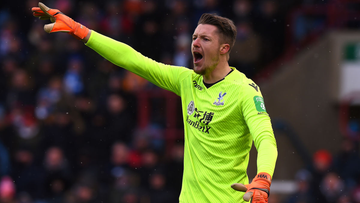An understanding of the game is the foundation of the modern keepers ability to communicate and establish a presence on the field.
We want our keepers to communicate and have a presence on the field. While there are many components that help establish the personality and presence of a goalkeeper, one thing that is essential is the ability to communicate and direct play. At the foundation of the keepers ability to to do this is an understanding of what is and what needs to happen on the field, and the ability to communicate this to the team quickly and clearly. It is unfortunately the progressive building of the keepers full game understanding that is often neglected and the result is a goalkeeper who does not communicate effectively and whose presence does not fully develop.
One of the reasons that this foundation of understanding is often overlooked is due to the fact that at all levels of the game, goalkeepers frequently learn and train the technical aspects of the position during specialized position-specific training sessions away from the team. This attention and training, while essential, has limitations. Often while the keepers are off training, the team is learning the tactical components that they will utilize in games. When the keepers return to the team they are put into games where they are not only expected to make the save but to read and direct the game in front of them. Because the goalkeeper has not been with the team as they progress through tactical demands and expectations, he or she may not understand what the team is expected to do, or have the vocabulary to communicate adjustments. A coach may recognize this and, trying to be helpful, may tell the keeper what system that they will be playing, but that is not enough. If the keeper has only ever played four in the back with a stopper and sweeper and the team has just spent time learning a “flat” four the problem becomes obvious.
So the question becomes how to effectively train keepers in both the technical specifics of their position and develop their tactical understanding of the game. The coach that is able to do this effectively will ensure that the keeper becomes both a confident and constructive voice on the field. This voice does not develop overnight but, like the ability and understanding of their field player counterparts, comes over time and through progression.
Communication at the early stages of development can be as simple as calling “Keeper” when going for the ball. This sounds easy, after spending a water break with a team of any age or gender we all know that even the youngest players can talk. However, on the field, younger players may not have the confidence needed or do not want to appear “bossy” or “mean” to their teammates. If this is the case, getting a young keeper to give this basic command can be as simple as giving them permission to do so. Reassuring them that their teammates want to hear from them can go a long way in getting a young goalkeeper to begin to be vocal and communicate on the field.
Once a keeper is comfortable with basic commands, the next step is for him or her to begin to take an active role in directing the play immediately in front of them. This is easiest to teach in fairly predictable situations where variables are easier to identify and manage, for example during restarts. In these situations the communication expands to include the positioning of players on the field in relation to a stationary ball. Here the goalkeeper needs to understand what the team is expected to do defensively (set a wall, cover a post, a player, an area…) in a given situation. Establishing simple and consistent commands and expectations that both team and goalkeeper understand is the first priority. The young goalkeeper will gain experience and confidence during training sessions devoted to these situations when the play is stopped and the commands relatively predictable. As the keeper begins to communicate in these situations, his or her voice and presence will begin to develop in other situations. With this development the keeper starts to become an integrated part of the team on the field.
Unfortunately, too often a keeper may be able to communicate and take charge in the box or on a set piece, but once the ball is out of immediate danger he or she does not develop much past this and essentially becomes a bookend to the play. At best the goalkeeper may move with the play, but say nothing, and at worst he or she may stand firmly planted somewhere in the 18 and watch with limited or no understanding of the play that is unfolding on the field. Not only is the latter not helpful to the team, but it puts the keeper in a position where he or she will likely be out of position when called upon to be involved in the play. It is therefore essential that the keeper continues to develop past this.
The keeper must now progress from reacting to an immediate or fixed situation, to an understanding of and ability to communicate during the flow of the play. The keeper is now expected to identify and understand situations as they develop and communicate proactively to direct the play in response. It is here that keepers often get stuck, not from a lack of desire, but rather it is a lack of understanding and vocabulary that prevents their progression. Development of this ability is therefore twofold.
The goalkeeper must both understand the demands of the game and be able to articulate this understanding in a clear and concise manner that the team understands. This is most easily done when the keepers foundation of individual and team tactics is laid from the youngest age on in conjunction with the team. Just as a defender must have an understanding of the role of the 1st defender before he or she can be expected to comprehend team defensive tactics, a keepers understanding must similarly be developed. This understanding can be facilitated by making sure that the keeper is actively involved in team training when tactical components are first addressed.
When moved to a higher level of play, a good reactionary keeper may not have the foundation necessary to understand what is happening on the field. When it is not possible to train the keeper through this progression with the team, without losing individual keeper specific training time, it is essential that it is taught to the keeper once he or she returns the team. While learning alongside the team is best, one way to provide a tactical crash course as it were is to have a coach stand behind the keeper during training and talk through what they are seeing on the field. Take for example a collegiate keeper I worked with. Her performance in goal was above average, but outside of saying “Keeper” and “Away” she was essentially mute. Her positioning was good, she had had solid technical training, was confident in her abilities and had a good relationship with her teammates. In my mind there was no reason she should not be communicating on the field. At first I chalked her silence up to freshman jitters, but it soon became clear that while she understood the position and could read what was happening on the field, and react appropriately, she had no idea how to articulate this understanding to her teammates. I spent several sessions standing behind her in goal during training. During this time I did not give her direction, but rather acted as her voice directing the team. As we did this she began to learn the vocabulary needed to articulate what she saw on the field and began to communicate more. The more she said the less I did until my talking stopped and she took charge. Had she been taught from an early age not only how to read and react to what she saw, but been given the vocabulary to communicate this to her teammates, she would have developed her presence on the field much sooner.
Like the keeper mentioned above, many keepers can tell you what they do not want to see, but do not fully understand how to make positional adjustments or communicate these adjustments to their teammates. Whether it is because they were off training separately, or thrown in goal with little direction as the team covered tactics, the result is the same - a keeper with limited ability to effectively communicate with the team. A keeper who understands the bigger picture of the game and communicates this effectively will establish a presence on the field and be able to not only manage and avoid dangerous situations defensively, but become an integral part of a team’s ability to initiate and take advantage of attacking opportunities. It is therefore essential, in order to develop goalkeepers who are vocal and have a presence on the field that, from the youngest age on, the goalkeepers understanding of the game is developed alongside that of their teammates.
Sarah Dwyer-Shick

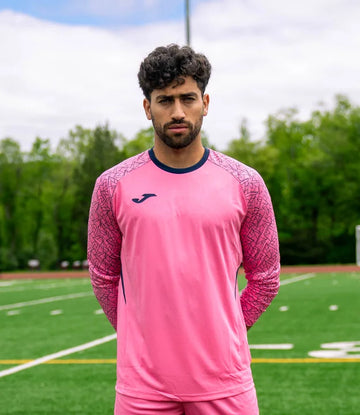
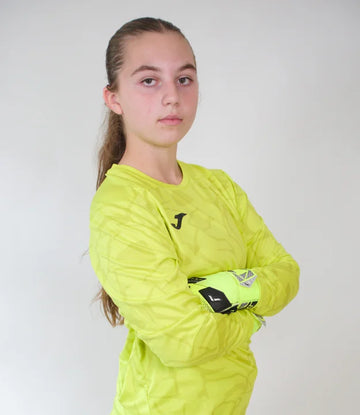
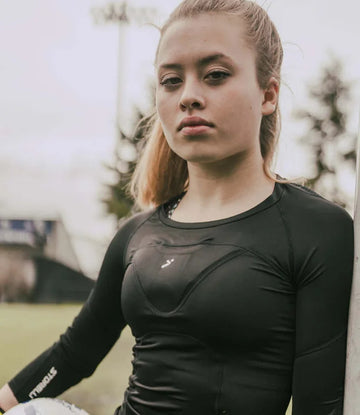

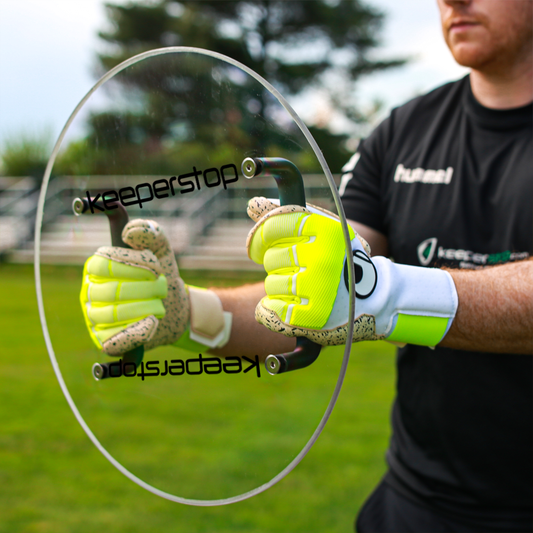
 Gloves
Gloves
 Jerseys
Jerseys
 Gear
Gear
 Brands
Brands
